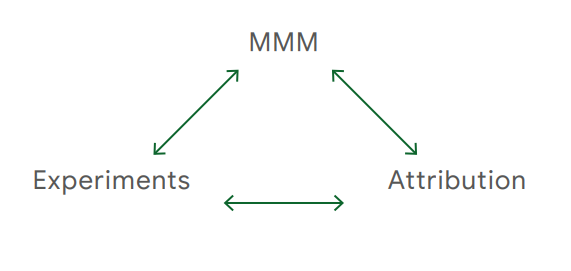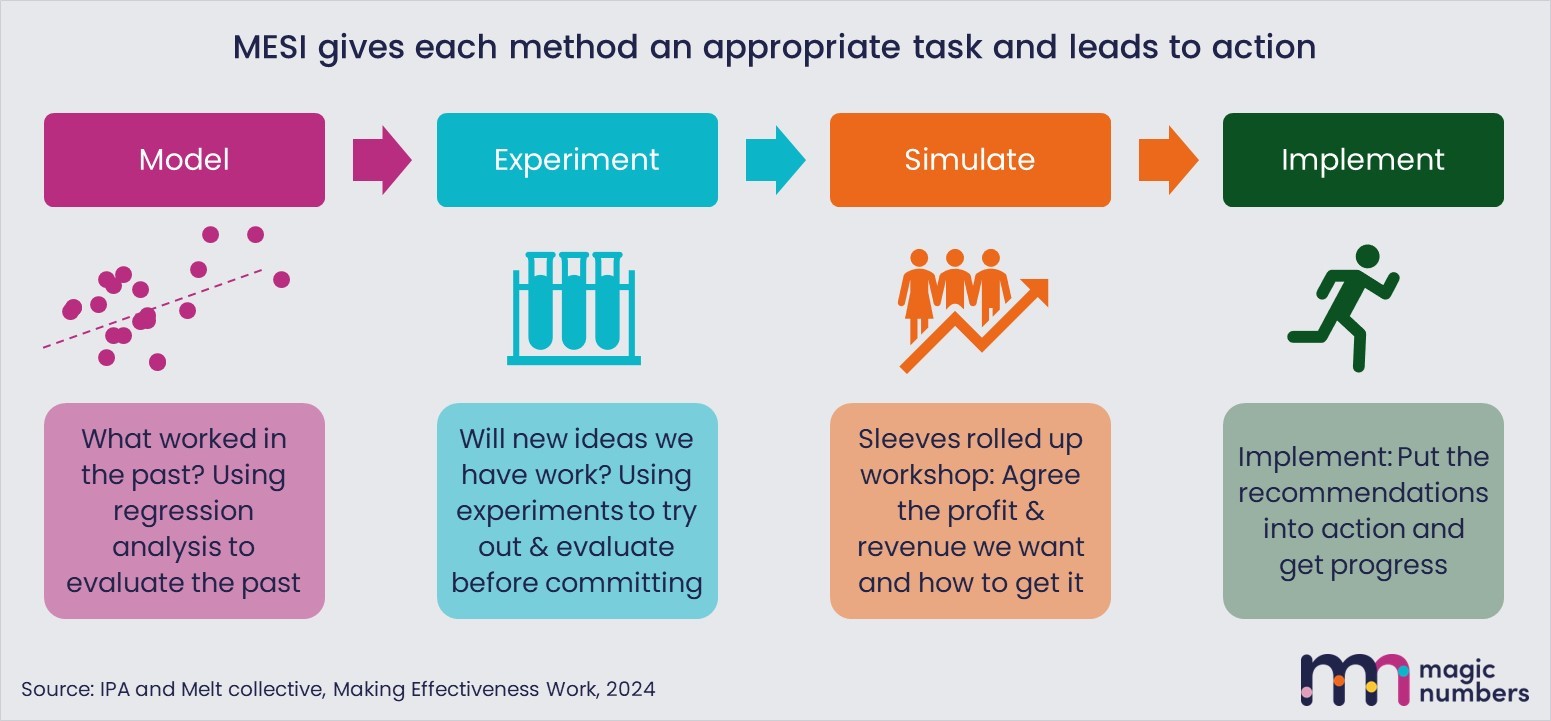Instead, MESI matches methods to the questions that each is well suited to answer. Modelling is for questions about what generally worked in the past, and experiments are for questions on specific things that haven’t been tried yet.
Instead, MESI matches methods to the questions that each is well suited to answer. Modelling is for questions about what generally worked in the past, and experiments are for questions on specific things that haven’t been tried yet.
But the real joy in MESI is that it prompts you to brings answers to all these questions together in a forward-looking simulation. This step gets teams talking about the future in an informed way, and it leads to next steps that everyone’s happy to implement.
The acronym, MESI, stands for sequential steps that make up a recipe:
- The M is for modelling – econometrics or MMM. You do that first to get an overview of what works based on what you’ve done before.
- E is for experiments – properly designed by an independent expert. You do this next to test things you haven’t tried yet.
- S is for simulate – combining results into forward looking scenarios that forecast total sales and profit. You do this with everyone in the room, including finance.
- I is for implement – agreeing on the future you want and taking the steps to get there. You agree on a plan B too, and know the criteria for when you need to trigger it.
Our most sophisticated clients at magic numbers are using this framework, nestling all the steps into powerful technology developed by our parent company Analytic Partners.
And it works. For example, the pan-European retailer who’s able to wargame their future using MMM results and the findings of good quality experiments, all in the same simulation.
All of their markets know how media plans ladder up to the C-suite’s desired outcomes, and they implement those plans, monitoring how well each decision works and tracking the revenue improvements they get.
It’s how the global C-suite got behind marketing as a driver of growth, and it’s how they got €220m in additional revenue without increasing spend.
Flying out of the Bermuda triangle
More than 50 ships and 20 planes have disappeared in the real-life triangular bit of sea and air between the Bahamas, Bermuda, and Puerto Rico since the 1800s.
No-one ever died because of bad marketing. But if we’re counting money, the loss to businesses from the Bermuda triangle of marketing measurement is much, much bigger.
Millions of marketing departments have been stuck in an endless loop of mismatched analytics and conflicting reports, all tied to an ineffective framework that fails to translate into real business impact.
Attribution is dead, experiments have their limitations, and numbers that come with ulterior motives get you nowhere.
MESI changes that. It delivers alignment across teams, integrates finance into the conversation, and ensures that marketing decisions aren’t just data-driven, but business-driven.
So don’t be a lost ship in 2025 and don’t let your business be a plane that goes down and vanishes. Make this the year you adopt marketing measurement that actually works.



